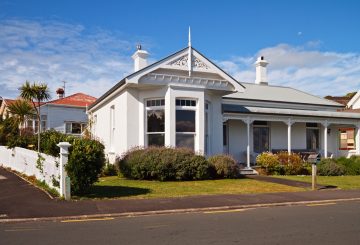Hiệp định thương mại tự do New Zealand-Vương quốc Anh sẽ có hiệu lực vào cuối tháng Năm, loại bỏ hầu hết thuế quan đối với xuất khẩu sang Vương quốc Anh sớm hơn so với hy vọng.
Thủ tướng Chris Hipkins, tại London dự lễ đăng quang của vua Charles, và Thủ tướng Anh Rishi Sunak đã công bố ngày bắt đầu thỏa thuận vào sáng thứ Năm.
Thỏa thuận ban đầu được hy vọng sẽ được hoàn thành vào cuối năm 2022, nhưng sau tình trạng hỗn loạn chính trị và hai thủ tướng mới ở Vương quốc Anh, Anh Quốc dự kiến sẽ đưa thỏa thuận này có hiệu lực vào giữa năm 2023.
Hipkins cho biết Sunak đã ủng hộ việc đưa thỏa thuận này đến ngày bắt đầu ngày 31 tháng 5. Sunak cho biết thỏa thuận thương mại đánh dấu “một chương mới trong tình hữu nghị vĩ đại giữa hai nước chúng ta”.
Bộ trưởng Thương mại Damien O’Connor cho biết hiệp định thương mại tự do dự kiến sẽ tăng GDP của New Zealand lên gần 1 tỷ USD.
Hiệp định thương mại tự do, được ký kết vào tháng 3 năm 2022, có nghĩa là 69% xuất khẩu hiện tại sẽ được miễn thuế ngay từ ngày đầu tiên có hiệu lực. Các sản phẩm xuất khẩu còn lại, bao gồm táo tươi, bơ và pho mát, thịt bò và thịt cừu, sẽ dần dần trở thành miễn thuế quan trong vòng 15 năm.
Thỏa thuận này cũng sẽ mở cửa New Zealand cho các nhà thầu và các chuyên gia kinh doanh Anh, và nâng ngưỡng kiểm tra các khoản đầu tư của Anh tại New Zealand lên 200 triệu USD.
Anh hiện là đối tác thương mại lớn thứ bảy của New Zealand, và hiệp định thương mại tự do dự kiến sẽ tăng xuất khẩu 40%.
Credit: stuff.co. nz





























































